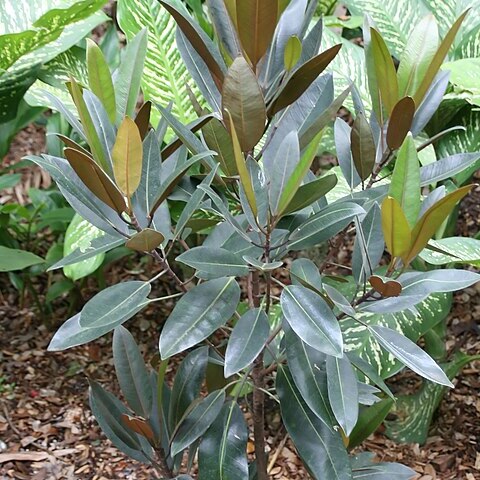A fig. It is a tree up to 30 m high. It often occurs as a strangler. It has a rounded or spreading bushy crown. It can spread 15-30 m wide. Young branches are covered with rusty hairs. The leaves are simple and 9-25 cm long by 8-10 cm wide. The leaves are leathery and blunt. There are rusty hairs underneath the leaf. The leaves are crowded towards the ends of branches. The leaf stalks are 8-10 cm long. The fruit are 10-17 mm across. They occur singly or in pairs in the axils of leaves. The surface of the fruit is covered with small rusty hairs. The fruit are edible.


